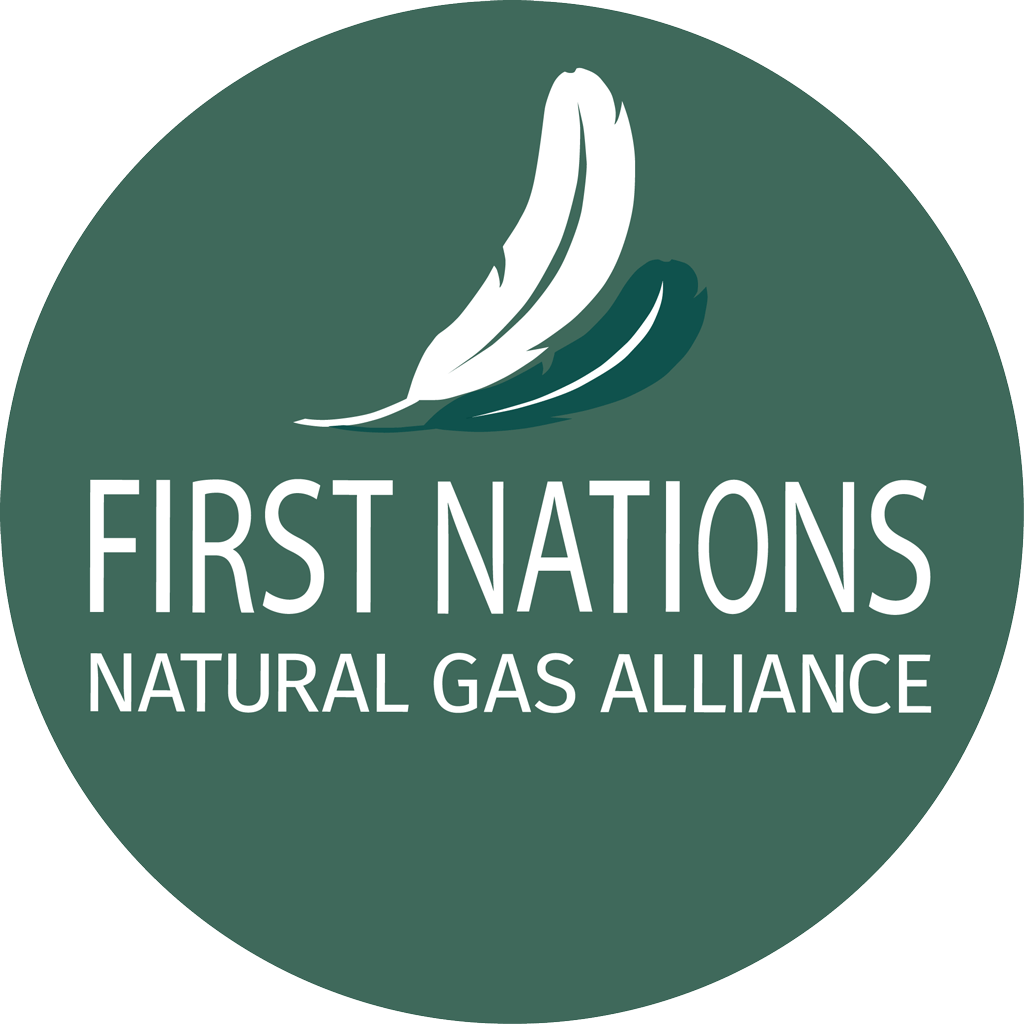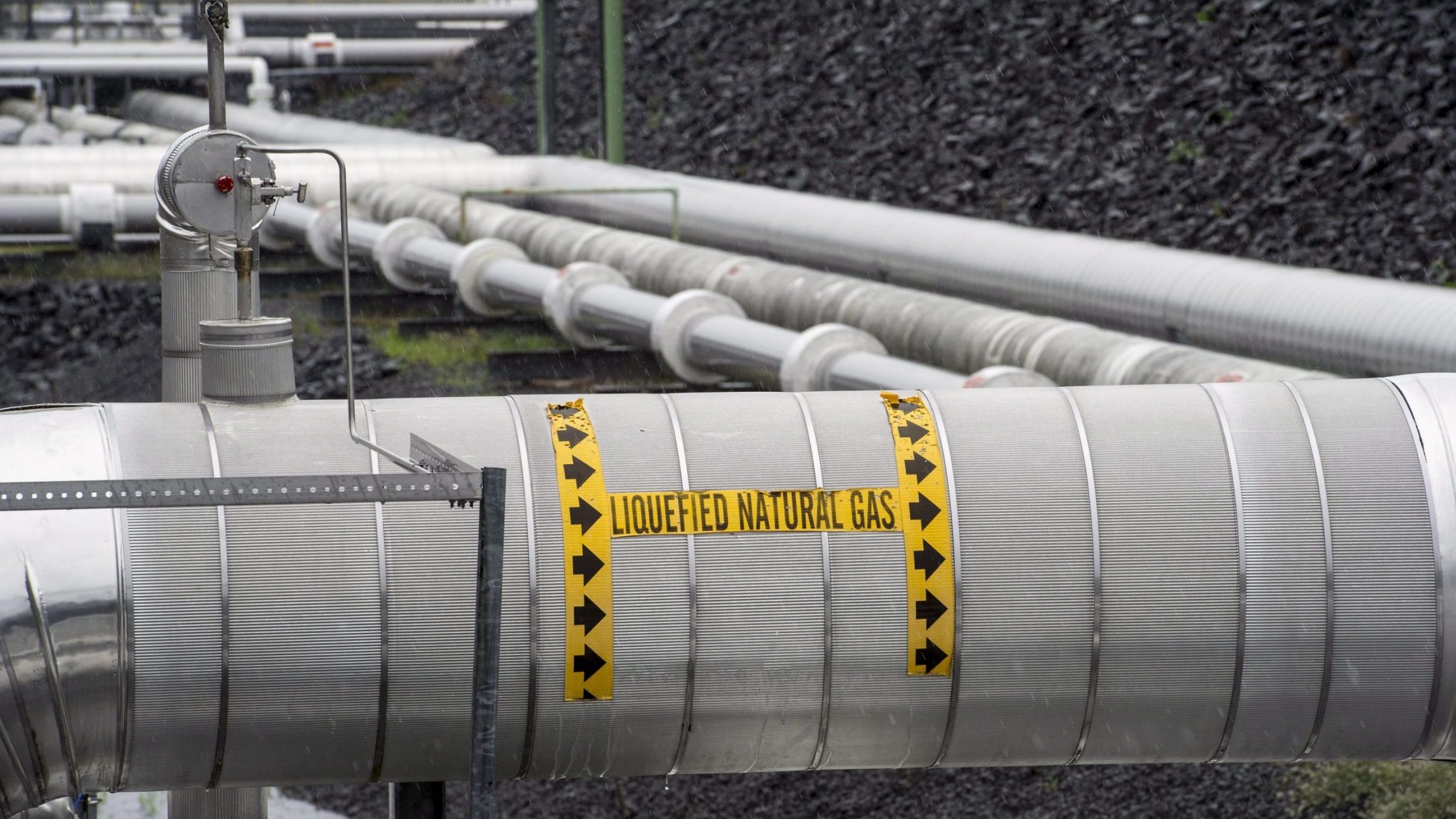LNG 1 (and 101)
To begin, a little LNG 101: What is LNG, and where does it come from?
LNG is made from the same natural gas that we use to heat our homes, cook our food, and fuel many Canadian businesses.
When natural gas is cooled to -162°C it liquefies and becomes much more condensed, shrinking by some 600 per cent. As our friends at FortisBC say, this is “roughly the equivalent of shrinking a beach ball to the size of a ping-pong ball.”
In this liquid form, LNG can be efficiently stored and transported inside double-walled and insulated containers such as a storage container or a special “LNG carrier,” a ship designed to carry LNG to overseas markets. Such carriers have double hulls and are constructed of materials that are capable of safely storing LNG at its low temperature.
LNG is an odourless, non-flammable, non-toxic liquid that has been safely and securely shipped around the world for well over 60 years.
Before liquefaction, the gas is normally cleaned of water, sulphur, hydrogen sulphide, benzene, mercury, and other unwanted components. Then it goes into the cooling process and becomes LNG.
After storage or transport, the LNG can be turned back into natural gas. For that, the LNG goes into a “regasification” facility where it is vapourized and heated back into gaseous form. The resulting gas is then delivered to the end-user by pipeline.
LNG is thus being used around the world by utilities and power producers to generate electricity with low emissions, to power homes and hospitals, to fuel ships, bus fleets and trucks, and to manufacture essential products including steel, medical equipment and fertilizer.
Natural gas is primarily methane, and leakage of methane during the extraction, processing, and transportation processes of natural gas, including LNG, is a cause for climate concerns. The Canadian natural-gas and LNG industries have been working for many years to keep limiting such leakage.
We occasionally hear critics say that natural gas is not really ‘natural.’ But it is indeed a naturally occurring substance, formed over millions of years from decomposing organic matter under the earth’s surface. It’s called ‘gas’ because it exists in a gaseous state, and the word ‘natural’ also distinguishes it from manufactured gas such as coal gas that used to be obtained by heating coal.
• And from Shell, this video: the LNG process explained, from extraction to delivery: https://ow.ly/Khi550WC4gn
LNG 2: WHY LNG MATTERS
Simply: Natural gas burns cleaner than other fossil fuels.
That’s why it’s widely seen as a replacement for coal or diesel, fuels that are burned in many countries to generate much-needed electricity but that produce more greenhouse gas (GHG) emissions.
LNG can, therefore, help international efforts to reduce emissions and improve air quality.
It’s also a safer way to transport energy product than some other fuels: LNG as a liquid is not flammable or explosive because there is no air to create a risky mixture that could ignite.
If there ever is a leak, LNG would warm up, turn back into natural gas, and dissipate without leaving any residue on land or water. And natural gas has a much higher ignition temperature than gasoline – about 648°C compared to 315°C for gasoline. That makes it more difficult to ignite.
Canada is one of 21 nations that export LNG, although we have only just started shipments from LNG Canada at Kitimat BC. The major exporters are the United States (No. 1 in the world and growing), Australia, Qatar, Russia and Malaysia. There are 55 countries that import LNG, led by China, Japan, South Korea, and France.
Now under construction in BC are Woodfibre LNG, the Haisla Nation’s Cedar LNG project, and expansion of FortisBC’s Tilbury LNG. In government approval processes is the Nisga’a Nation’s Ksi Lisims LNG project.
And LNG Canada, which began export shipments on June 30, now is looking into potential expansion of its plant, which would increase output to 28 million tonnes a year from 14 million.
The federal government says Canada has enough underground reserves of natural gas to last more than 200 years at current demand. The country with the largest reserves of gas is Russia, followed by Iran, Qatar, Turkmenistan, and the US.
And for those who see hydrogen as an important “clean fuel,’ the U.S. Energy Information Administration calls natural gas “the largest source of hydrogen in our long-term projections.”
- Learn more about “clean” LNG: https://ow.ly/TsrP50WzAON
LNG 3: INDIGENOUS BENEFITS
LNG projects can be a pathway to economic reconciliation for Indigenous Peoples, enabling self-determination and community growth, along with revenues, employment and training, capacity building and (always of Indigenous importance) environmental protection.
There’s ownership, too: The Haisla Nation’s Cedar LNG project, and the Nisga’a Nation’s Ksi Lisims LNG project are majority-owned by the Nations. At Woodfibre LNG, the Squamish Nation is an official regulator.
Fabrication has begun at the Samsung Heavy Industries shipyard in South Korea on Cedar LNG’s floating LNG vessel. “To see the floating LNG vessel start to take shape is so incredible,” said Crystal Smith, at that time chief councillor of the Haisla Nation. “In just a few short years, the vessel will arrive on our shores where it will serve as a reminder of what can be done when Indigenous Nations are given a share and a say in how our resources are used for the benefit of our people and the environment.”
The floating plant will be delivered in 2028, and the project will go into operation on Haisla territory later that year.
The Haisla and the Nisga’a have promised benefits to neighbouring First Nations. The Kitselas First Nation, for example, has signed a “landmark” Impact Management and Benefit Agreement with the Ksi Lisims LNG project. And the Coastal GasLink pipeline that feeds Cedar LNG (and LNG Canada) offers options to nations along the route for a 10% equity share.
Karen Ogen, CEO of our First Nations LNG Alliance, says Canada has been making progress in how capital projects are built in partnership with First Nations, with more and more communities participating through an equity stake. She cites the Cedar LNG project: “That’s a showcase for the rest of Canada, for the rest of B.C., that this is how projects get built.”
All this as Indigenous Peoples in Canada have negotiated options for well over $10 billion in equity in energy, renewable energy, and resource projects.
As Resource Works reports: The latest example is that of pipeline giant Enbridge Inc., which is about to give 36 First Nations in B.C. a 12.5% share in Enbridge’s Westcoast natural-gas pipeline system. The nations will invest some $715 million, with help from the federal Canada Indigenous Loan Guarantee Corporation.
David Jimmie, president and chair of the 36 nations, and chief of the Squiala Nation, says: “Enbridge’s Westcoast pipeline system is a legacy asset that has operated within our traditional territories for over 65 years. Now, our nations will receive sustained economic benefits from this asset, funding critical investments in housing, infrastructure, environmental stewardship, and cultural preservation.
“People often ask what economic reconciliation for Indigenous Peoples looks like. This is it.”
That equity agreement follows Enbridge’s pioneer 2022 partnership with 23 First Nation and Métis communities, giving them an 11.57% interest in seven Enbridge-operated pipelines northern Alberta for $1.12 billion. That was with the assistance of the Alberta Indigenous Opportunities Corporation.
Indigenous groups invariably need loans to make such equity investments, as the Indian Act bars nations from using their land as collateral for loans. They can, instead, look to loan programs offered by the federal government, B.C., Alberta, Saskatchewan and Ontario.
The federal program now has $10 billion available, and covers major projects across all sectors (with the exception of gaming). Our Karen Ogen welcomed that as another positive step.
And the BC government lists a long string of Natural Gas Benefits Agreements — “agreements between provincial government and First Nations that are part of the Province’s comprehensive approach to partnering with First Nations on liquefied natural gas (LNG) opportunities.”
- Learn more: https://ow.ly/aJkm50WzAZ1

